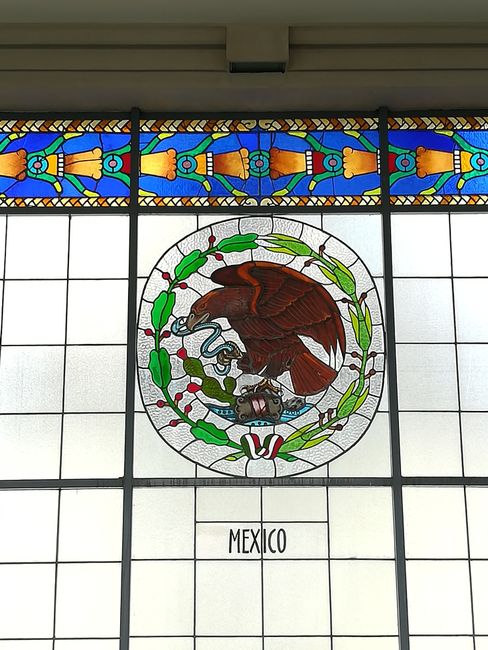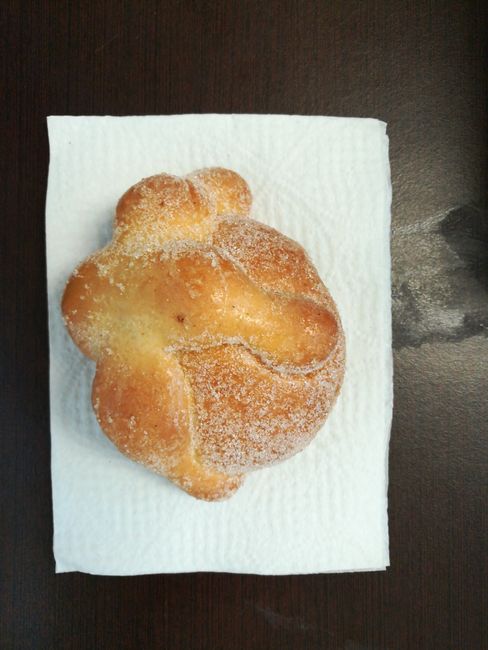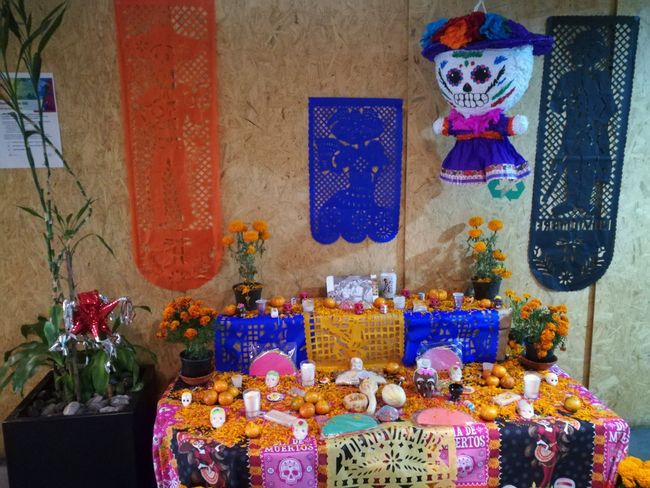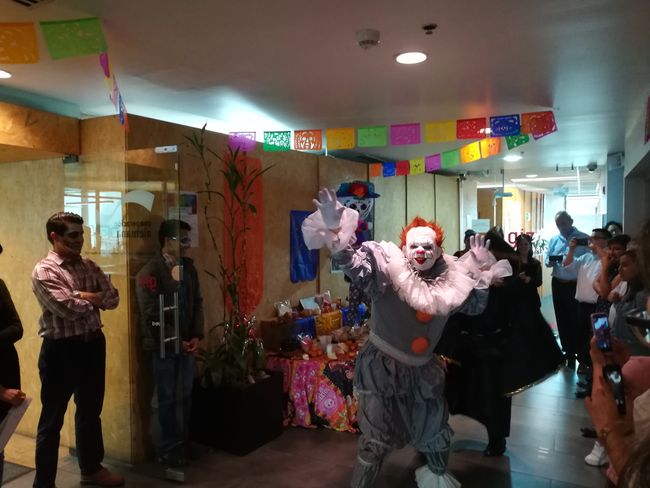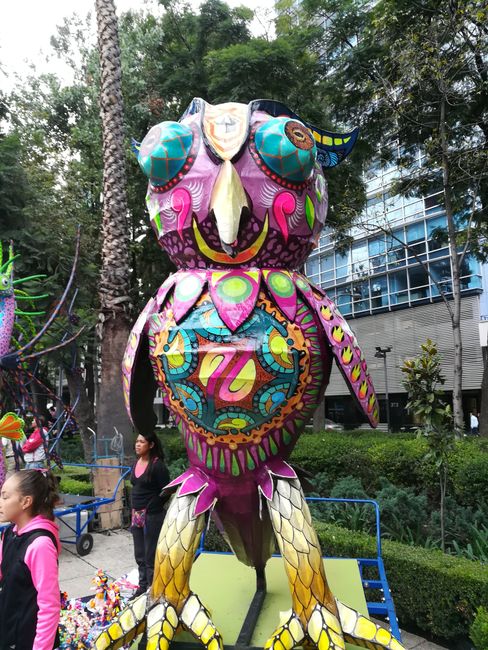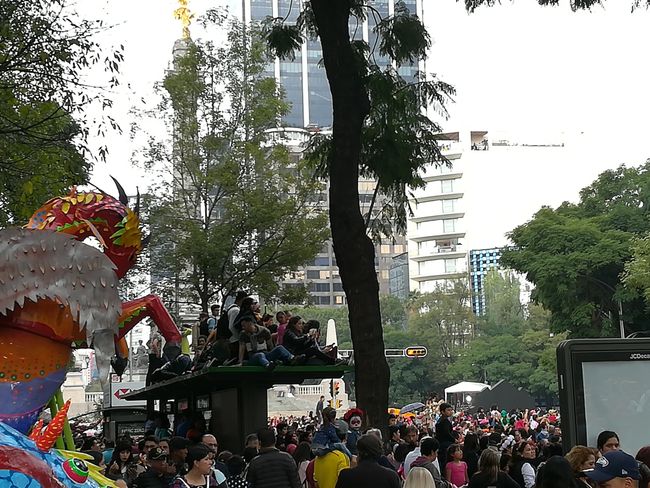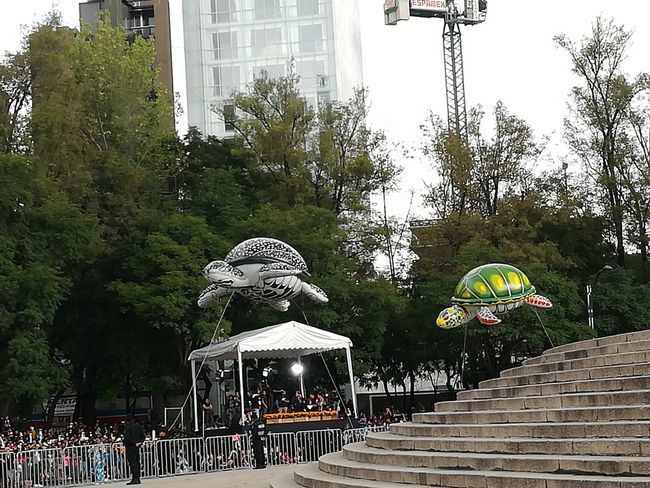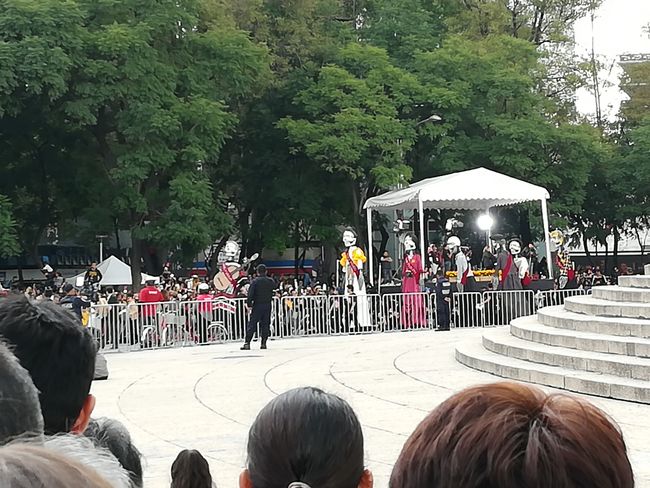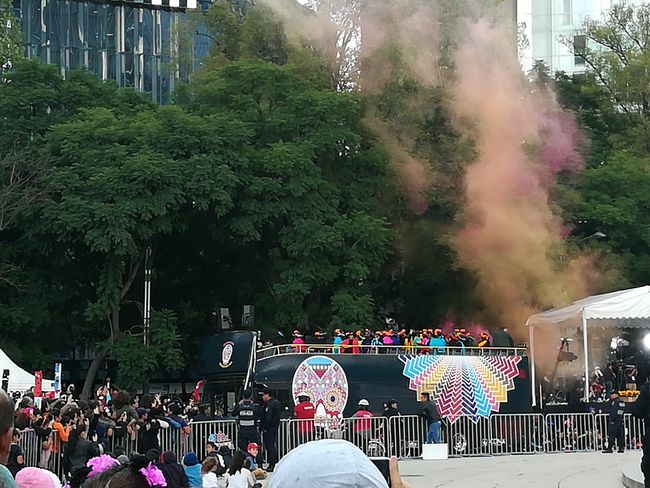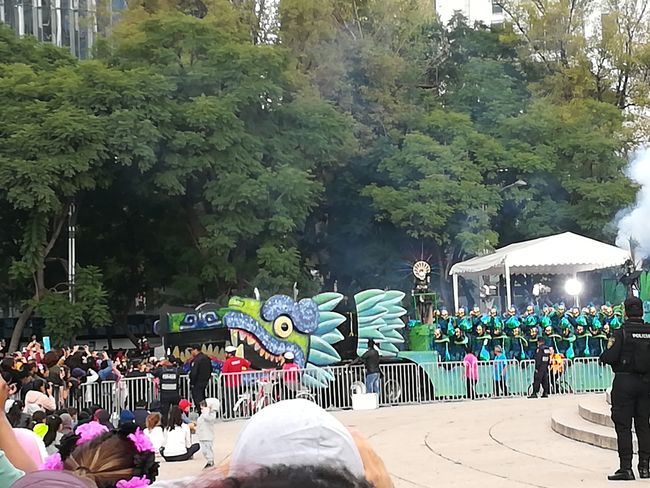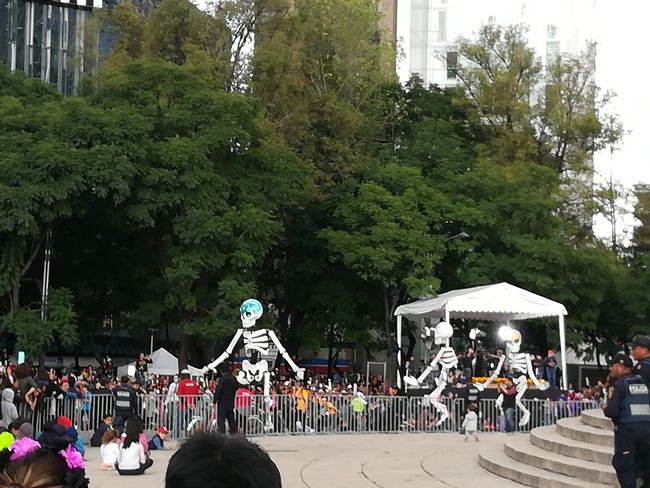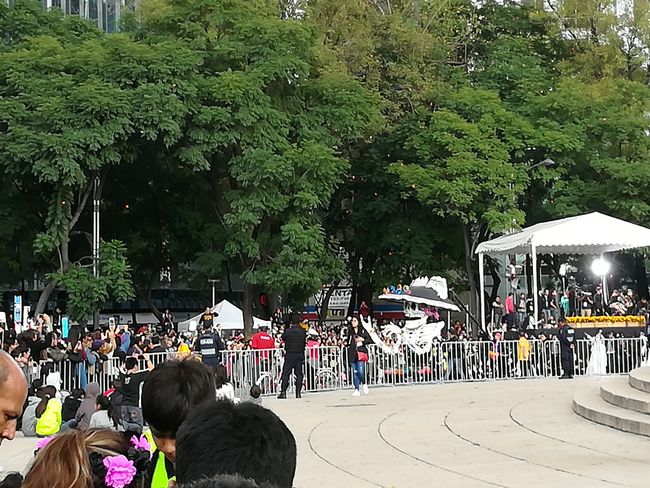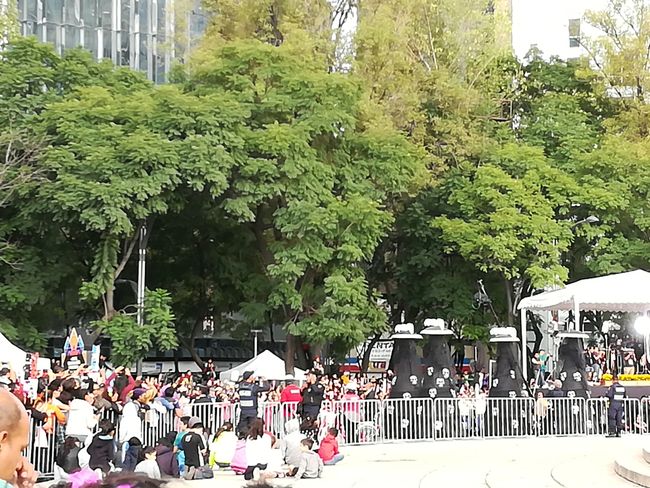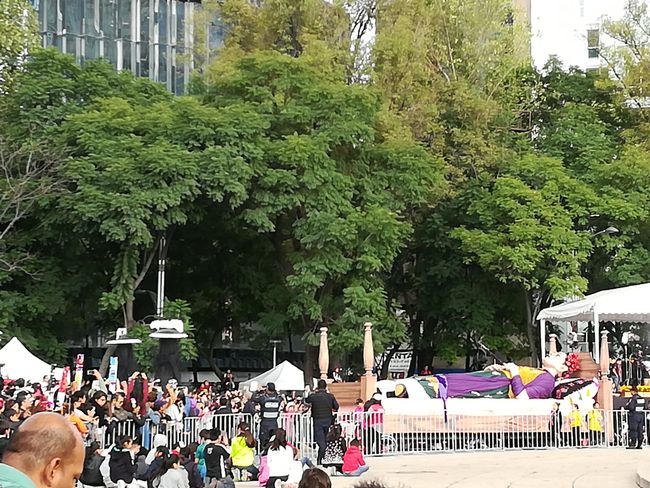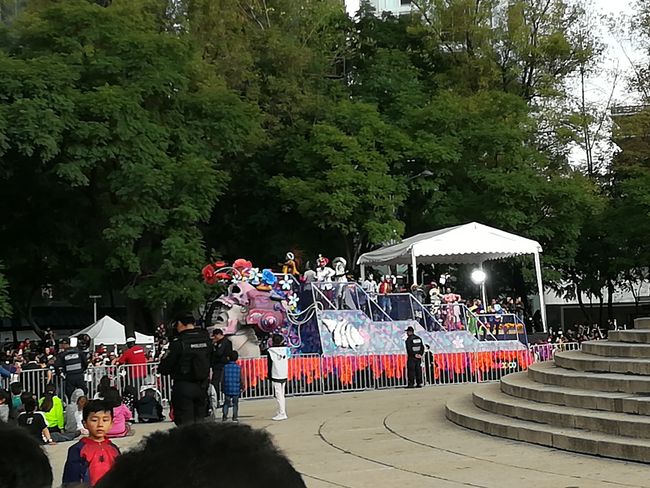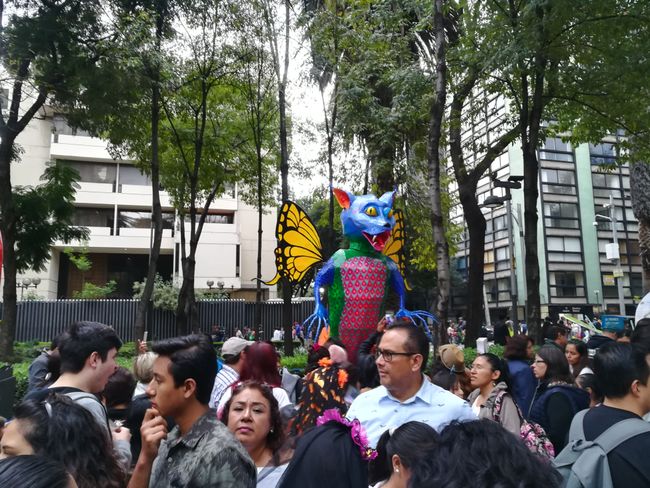Day of the Dead
已发表: 28.11.2018
订阅时事通讯
In early November, the Dia de Muertos (Day of the Dead) takes place in Mexico. It is a spectacle that is unique in its form and diversity and can hardly be found anywhere else in the world. As the name suggests, this day is dedicated to the deceased. However, unlike what we are used to in Europe, mourning is not done in peace and black clothes. On the contrary, it is typically Mexican with lots of colors, music, food, alcohol, etc.
The typical food for this occasion is Pan de Muertos, which is a sweet pastry. It doesn't really taste special, but it is a must-have for the celebration.
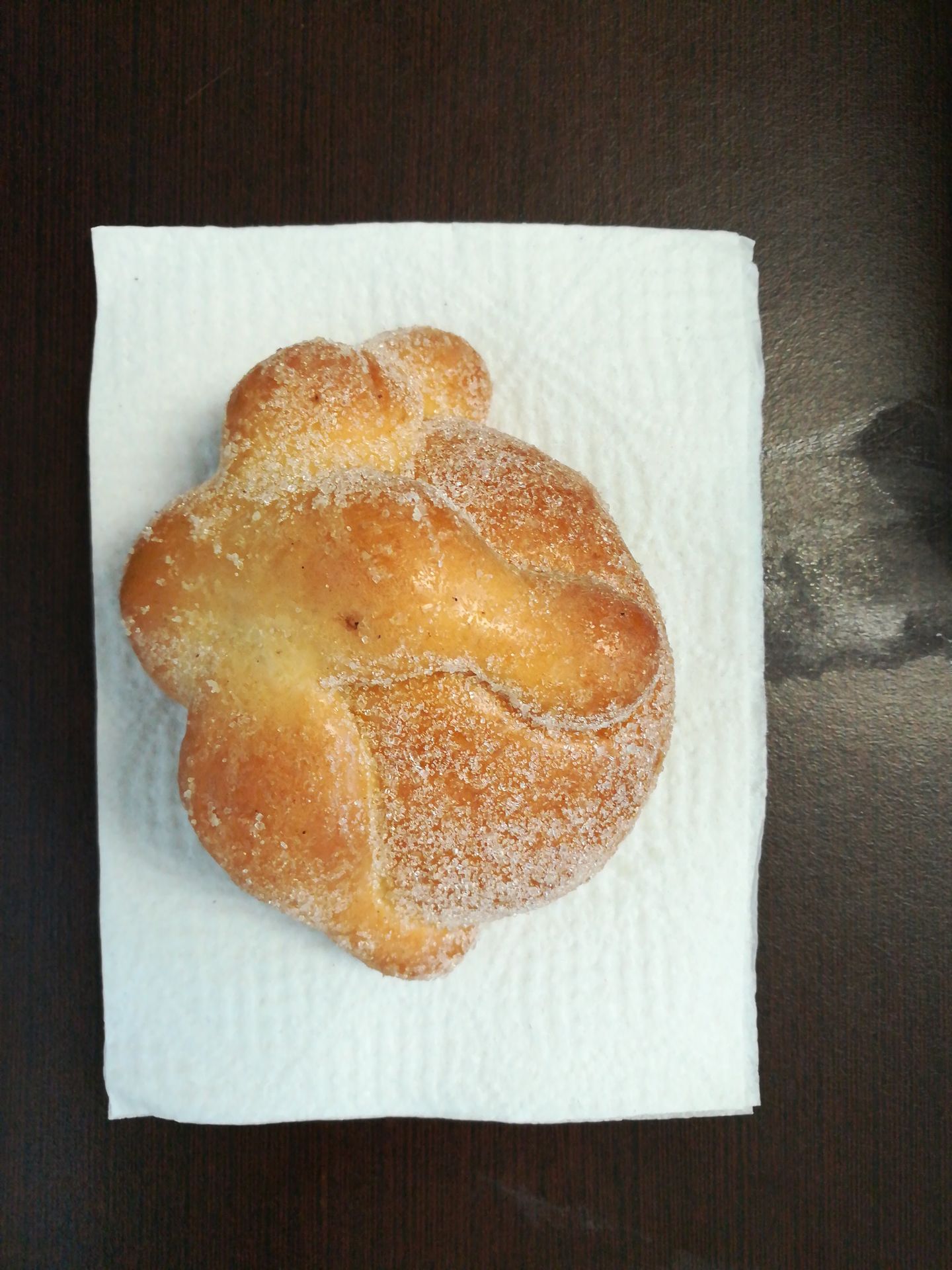
Both at home and at work, it is also customary to set up an altar. Photos of the deceased (often within the last 12 months) are placed on the altar. The altar is also decorated with colorful items and food. Food is important because during the Dia de Muertos, the spirits of the deceased return to celebrate with the living. It would be unfair if they didn't have anything to eat. This is the altar at the office:

Costumes are also very common. The Catrinas are well-known, as you can see in the image above in the form of a piñata. We also celebrated a little at the office. There was a lot of eating, singing, and dancing. It looked like this:
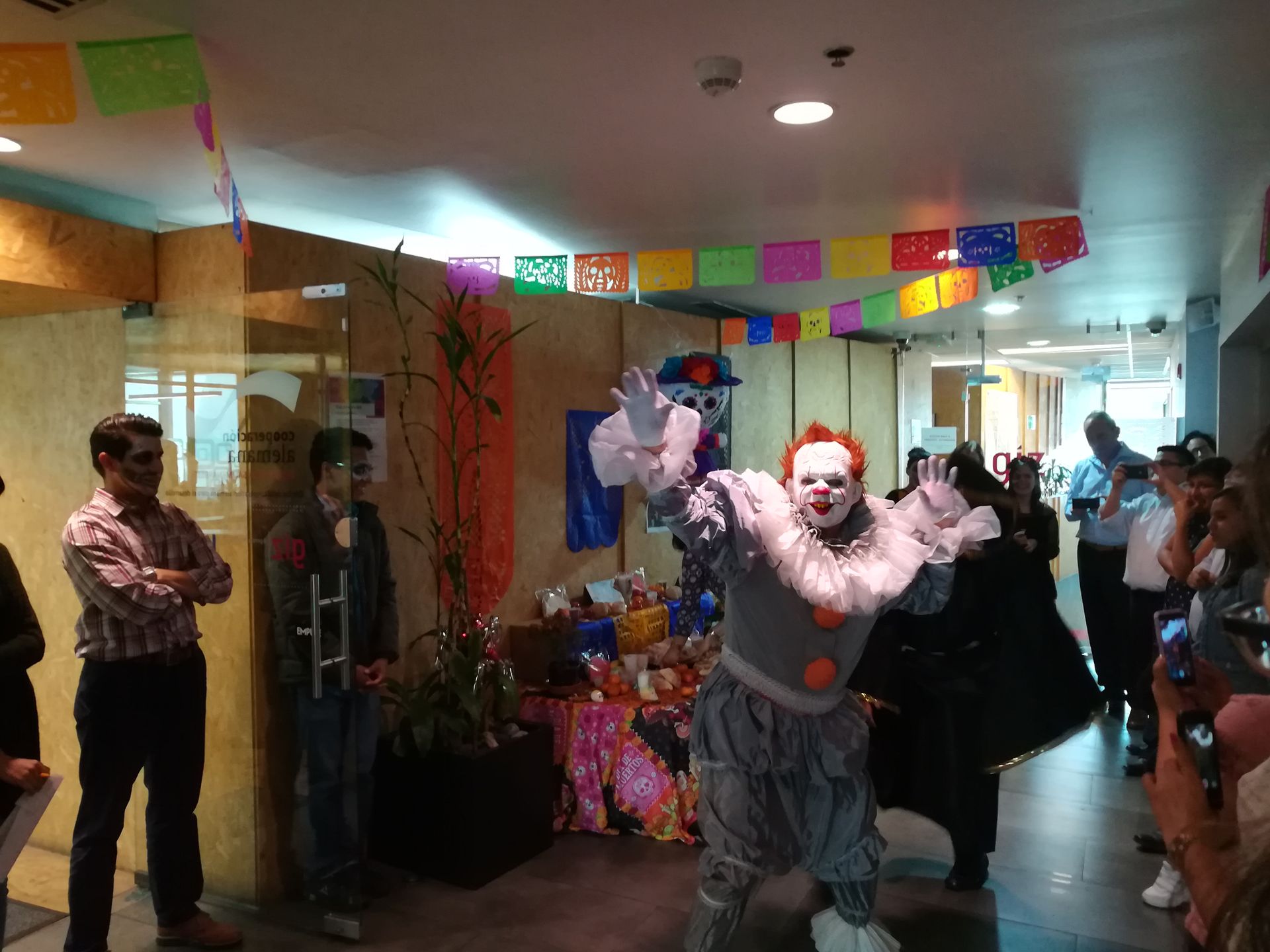
However, there is no typical Dia de Muertos. The customs for this occasion vary greatly by region. For example, in Oaxaca, it is normal for the whole family to gather at the cemetery at the graves of relatives and have a huge party there. Other states that are known for this holiday are Michoacán (especially the town of Pátzcuaro) and Yucatán. Unfortunately, I can't show you my own pictures from Guanajuato, where I was over the weekend. However, you can find countless great pictures from the corresponding regions on Google. Mexico City itself is not known for the Dia de Muertos celebrations, but there is still a lot to see here as well. Many of you may remember the parade from the James Bond film. In fact, this parade exists here (but only since the film) and I was there. It was extremely crowded and I was a bit far away, so the photos are quite mediocre. Along Paseo de la Reforma (the grand avenue in the city), there were also about 50 colorful sculptures, specially made by different Mexican artists, to admire. Here is a small selection of all that you can see:












That's all for now. In the next post, you will probably see a lot more nature.
Saludos
订阅时事通讯
回答

